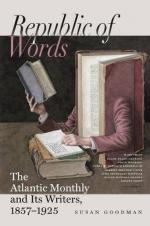The peculiar merit of this Encyclopaedia is its convenient adaptedness to popular use. The subjects treated of are broken up and distributed alphabetically under their proper heads, so as to facilitate reference. We are thus furnished with a dictionary of facts and events, where we may readily find whatever properly appertains to any particular point, without being compelled to explore an entire treatise. This, by the way, makes it a sort of hand-book even for those who possess the more voluminous works. As a necessary result of such a method of treatment, it will be found, upon an actual count and comparison, to contain more separate titles than any other Encyclopaedia ever published. Although the articles are generally brief, it must not be supposed that they are meagre, for they will be found to present a clear and comprehensive view of the existing information upon the particular topic, with a mastery which arises only from familiarity. Montesquieu said that Tacitus abridged all because he knew all; and no reader can peruse a number of this Encyclopaedia without being convinced that the success in preparing the perspicuous abridgments it contains is due to thorough knowledge. Its excellence is not confined, however, to the letter-press; for we are furnished with a series of colored maps, embodying the results of the most recent explorations, and also with a profusion of admirable woodcuts, illustrating the subject wherever pictorial exposition may aid the verbal. It will be recollected that no other Encyclopaedia published in this country has the advantage of illustrations.
The character of Messrs. William and Robert Chambers of itself gives ample assurance that the work is prepared and executed in a superior manner; but when we superadd to this the fact that they have spared no labor or expense, but have devoted to it all the resources of their experience, enterprise, and skill, in order to make the work, in all its departments, their crowning contribution to the cause of knowledge, we are the more ready to believe that it actually is all that it claims to be. The American edition by J.B. Lippincott & Co., of Philadelphia, is published in numbers simultaneously with the Edinburgh and London edition, and in an unexceptionable style of typography. Its low price brings it within the reach of almost every reader. Indeed, when we consider the size of the volumes, the number of illustrations and maps, the mechanical execution, and the compensation to the writers, we are at a loss to conceive how it can be profitably furnished at so cheap a rate.




